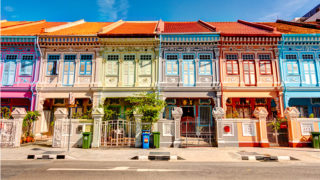In her previous contributions in Expat Living, CERI POWELL has taken us on guided tours around Fort Canning Park and along the Singapore River. This time, she takes us on a journey of exploring the history, temples and food of Little India in Singapore – one of the island’s most vibrant and colourful neighbourhoods.
Getting Started
This walk covers a distance of 2.2km and will take approximately 50 minutes – or longer if you pause more often to take photos and to soak in the atmosphere! The walk starts and ends at Little India MRT station. As you exit the MRT, take a left into Buffalo Road.
Location #1 – short history about Little India in Singapore
Little India, formerly known as Serangoon, got its name from the Malay word “saranggong”, possibly after a marsh bird called ranggong. The mangrove swamps made this area ideal for cattle rearing, with bathing areas for water buffaloes; they were the “workhorses” of Singapore at that time, used to transport gambier and pepper from plantations south to the river for export. Buffalo Road marks the area of the historical Kampong Kerbau (“Buffalo Village” in Malay).
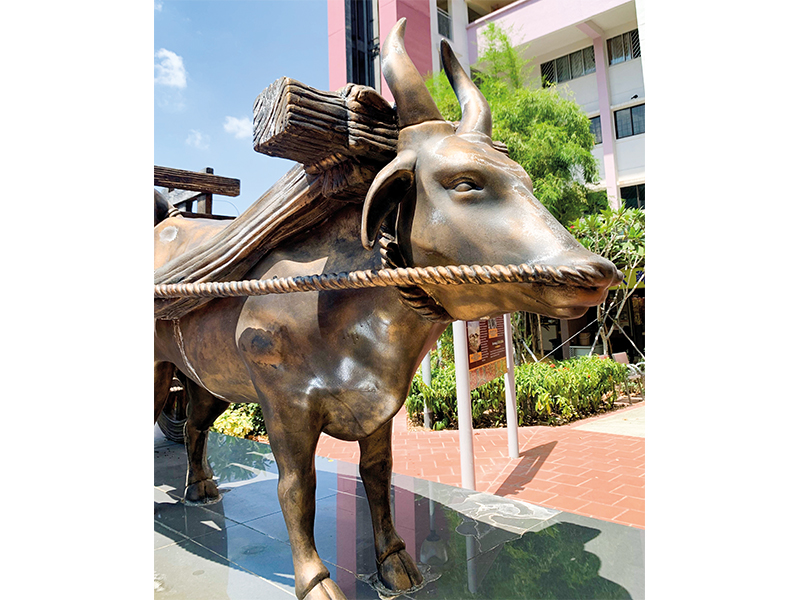
Location #2 – the colours and smells of Buffalo Road
Along Buffalo Road, garland-makers weave roses, marigolds and jasmine flowers for sale. Hindu worshippers will adorn the deities in the temples in Little India with these garlands. The red, yellow and white colours of these flowers symbolise love, peace and purity. The scent is heavenly, mixed with the aroma of tropical fruits imported from India.
Cross over Serangoon Road; today, it’s the main artery of Little India, and it was also the first road to cross Singapore island before 1828. Indian businessmen and workers were drawn to Serangoon by the production of lime, a raw ingredient used in a gleaming white plaster from India known as “Madras chunam”. The plaster was used to coat the government and religious buildings of the Civic District. St Andrew’s Cathedral bears testament today to the dramatic effect.
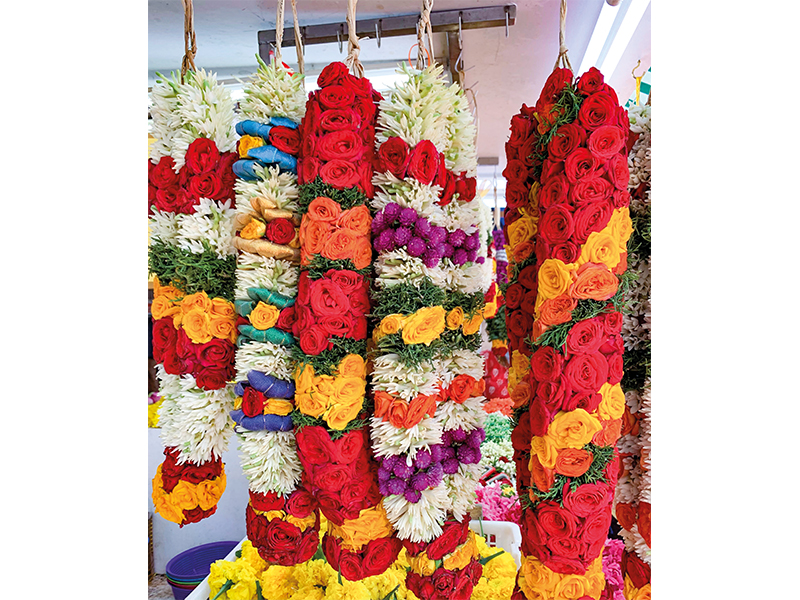
Location #3 – Haniffa Textiles
Pause for a moment to savour the huge variety of richly coloured textiles at Haniffa Textiles (haniffa.com.sg), the go-to place for silk for nearly 60 years. A treasure trove of saris, scarves and bedspreads often at affordable prices, Haniffa Textiles is one of the newly established Indian Heritage shops – marked with information stands outside the stores.
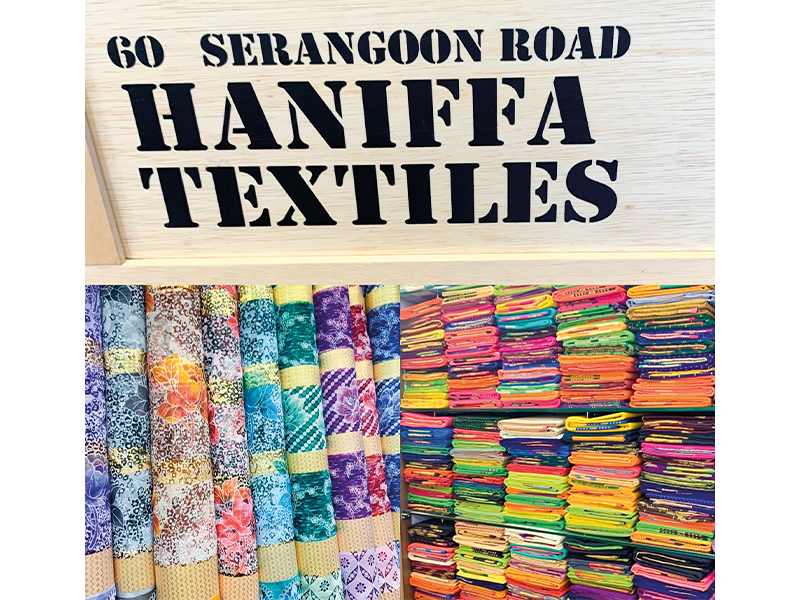
Location #4 – colourful shops & street food in Little India
Walk along the pedestrianised Campbell Lane and enjoy the colourful open shops with their deities, incense burners and North Indian Street food in Little India.
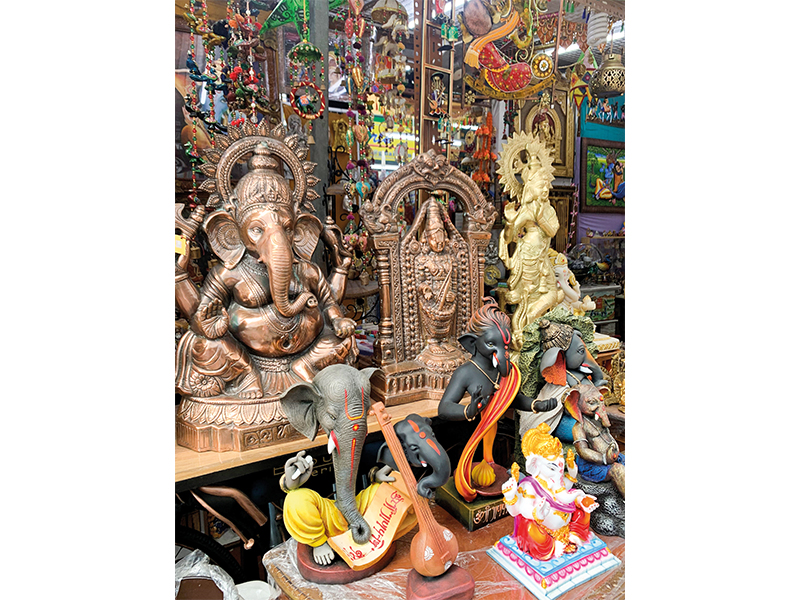
Location #5 – Indian Heritage Centre
The centre of Little India in Singapore, the Indian Heritage Centre (indianheritage.gov.sg) houses excellent exhibitions showcasing the history, diversity and customs of the Indian population over the centuries, including the Sikhs. The loyalty and regal bearing of the early Sikh arrivals resulted in them being in great demand as policemen and hotel doormen, as is still the case today at Raffles Hotel.
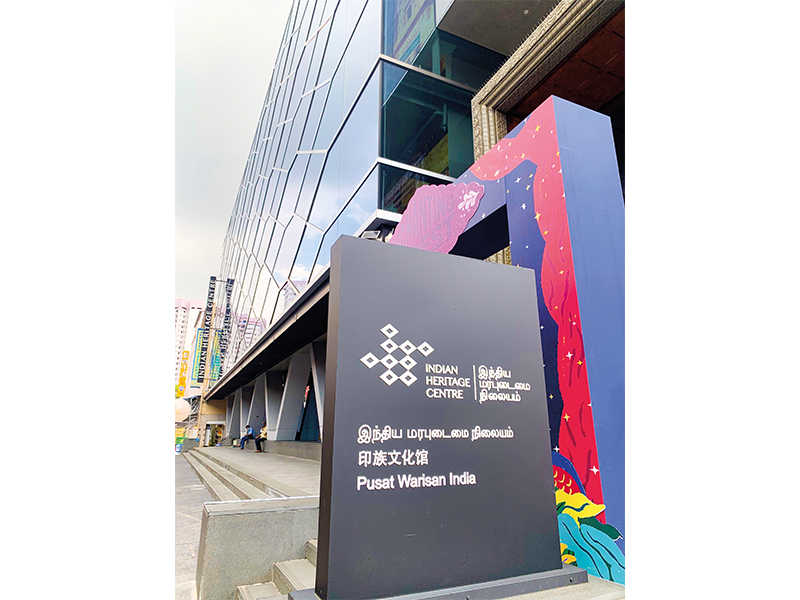
Location #6 – the shophouses at Dunlop Street
Turning left onto Clive Street and then right onto Dunlop Street, the variety of shophouses can be observed; the Heritage spice shop at no 124, Thandapani Spices, seems lost in time. A little further down Dunlop Street is the unusual Abdul Gafoor Mosque. Above the main entrance is an elaborately decorated sundial that is adorned with the names of 25 prominent Islamic prophets in elegant Arabic calligraphy in a departure from the more usual Islamic crescent moon and star motifs embellishing the walls.
Retrace your steps up Dunlop Street to Serangoon Road and cross over into Kerbau Road.
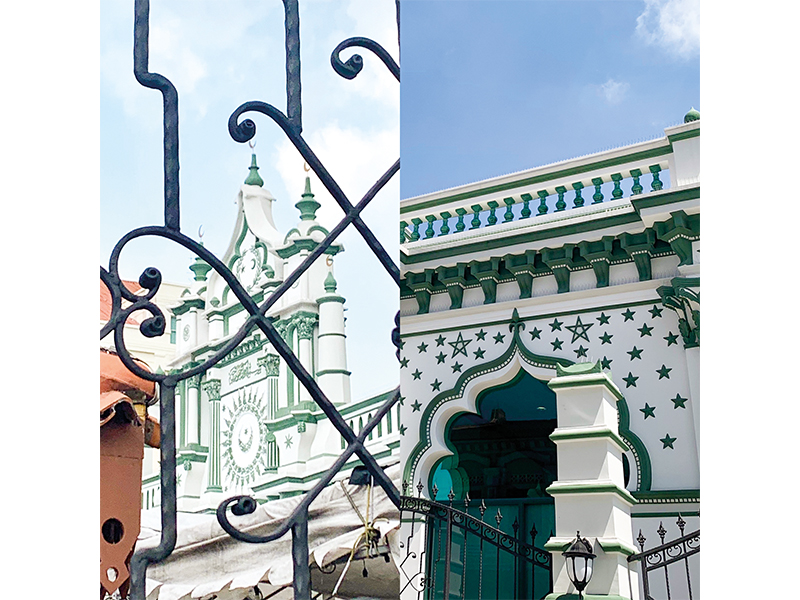
Location #7 – the most colourful building & authentic food in Little India
The most colourful building on Kerbau Road is the well preserved Tan Teng Niah house at No 37. Chinese businessman Tan Teng Niah (c.1862- 1925) had a sweetmaking factory here that used sugarcane as a main ingredient. Over the entrance door, there is a gilded name plate with the inscription Siew Song (“elegant pine” in Mandarin, symbolising endurance).
Turn onto Belilios Lane. If you’re peckish, food in Little India doesn’t come more authentic than the Village Curry café, complete with street art on the walls and tables on the street; just don’t expect plates or cutlery!
This spot was well known for parrot astrology; a parrot would be instructed to pick a card from a choice of 27 “fortune” cards. Behind the scenes, the parrots were trained to select fortune cards with especially lucky messages in order to attract more happy customers.
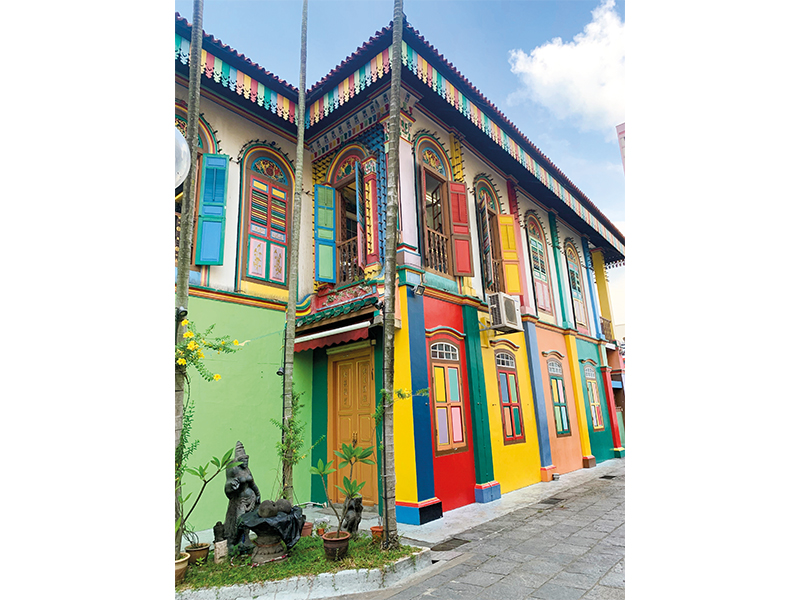
Location #8 – the first Kali temple at Little India in Singapore
Arriving on Belilios Road, we see ahead the dramatic Sri Veeramakaliamman Temple (srivkt.org), Singapore’s first temple in Little India is dedicated to the goddess Kali, a fierce incarnation of Shiva’s wife and “Destroyer of Evil”. Removing shoes and in respectful dress, walk around to behind the hindu temple to see a truly gruesome statue of Kali; the goddess appears to have killed an evildoer, and his entrails are dangling from her mouth as she screams. It’s a startling change from the usual positive deities in Hindu temples across Singapore!
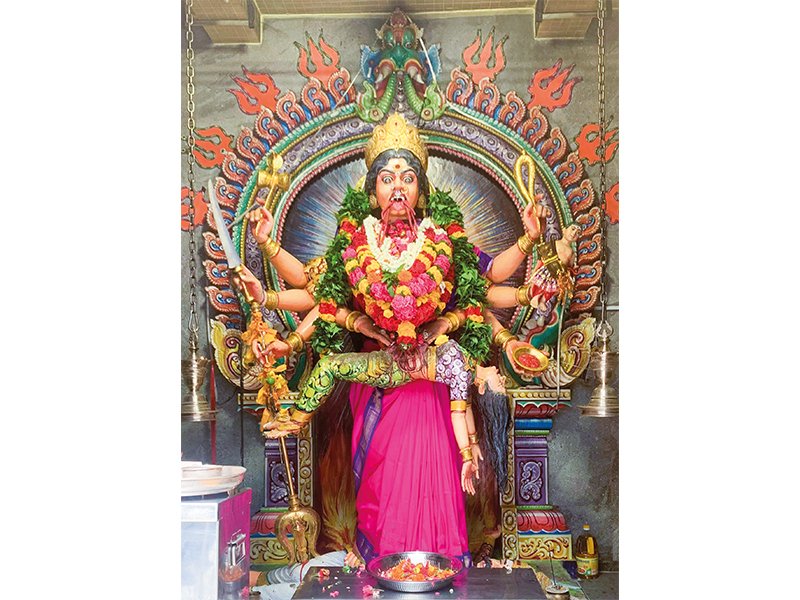
Location #9 – Mahatma Gandhi Memorial
Continue east along Serangoon Road and turn left into Race Course Lane, to view the Mahatma Gandhi Memorial at No 3. Gandhi’s reputation as a powerful icon of peace and his tragic assassination in 1948 are both well known, but maybe less so is that some of his ashes were brought to Singapore to be thrown into the sea after first being placed in Victoria Hall for Singaporeans to pay their respects. This memorial commemorating Gandhi’s life serves as a reminder to Indians, Muslims, Sikhs and Hindus that they all belong to one brotherhood; it’s beautifully placed in the heart of Little India today.
Walking up Race Course Lane and turning left along Race Course Road, we can reflect on the history of horseracing in Singapore. Among the early 19th-century residents of Little India were the Indonesian Baweanese, who arrived to construct the racecourse. The land was levelled, drained and cleared of vegetation within four months and the racecourse opened in 1843 with many of the Baweanese remaining as horse trainers and grooms. The inaugural race was named the Singapore Cup. During the first 20 years, horse-racing was mainly the domain of the merchants and Malayan royalty, with Chinese merchants taking up the sport in the late 1860s with the Confucius Cup.
To savour some of the best food in Little India, do make a pit stop at Race Course Road for thali, fish head curry or a cup of refreshing chai.
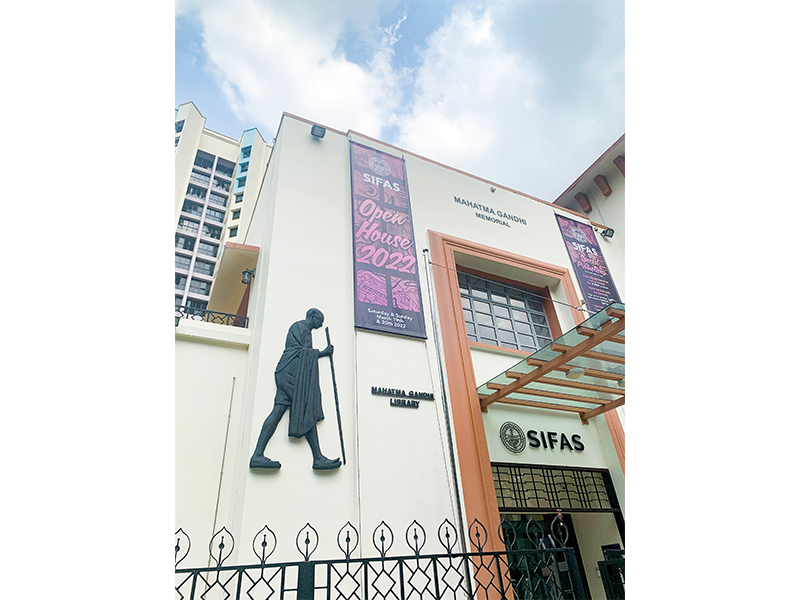
Location #10 – FooChow Methodist Church
The Foochow Methodist Church is one of a rich diversity of religious centres in Little India. Started in 1897 for the Foochow rickshaw pullers, the current church was built in 1938 with Art Deco lines and imposing windows. Quite a stark contrast to the Dravidian style of architecture of the temples in Little India.
Proceeding along Race Course Road to the corner of Kerbau Road, this place was where another Serangoon trade thrived: pineapple canning. The firm Chin Giap was famous for its brands Tiger and Defiance – rather strong names for tinned pineapples!
As we conclude our walk by strolling past the junction with Buffalo Road, we can imagine the time before the Tekka Centre when a variety of government buildings lined this busy junction, including the Kandang Kerbau Police Station, a lunatic asylum, and the bullock stables of the Public Works Department.
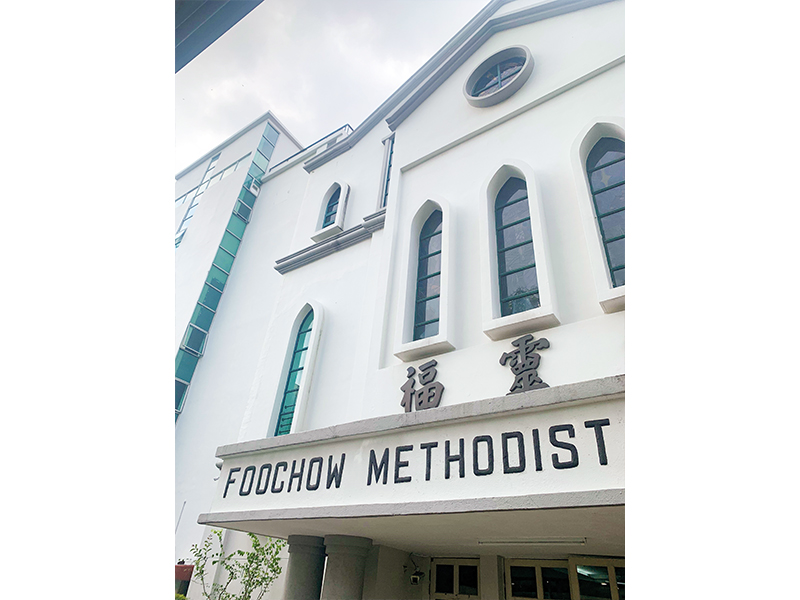
Location #11 – Tekka Centre
If you still have energy, the Tekka Centre is a riot of colour, textiles, food, henna and jewellery. Enjoy some time here – or just take a selfie with the Buffalo on a Bicycle to remember your visit! The walk ends at the Little India MRT station entrance at the Tekka Centre.
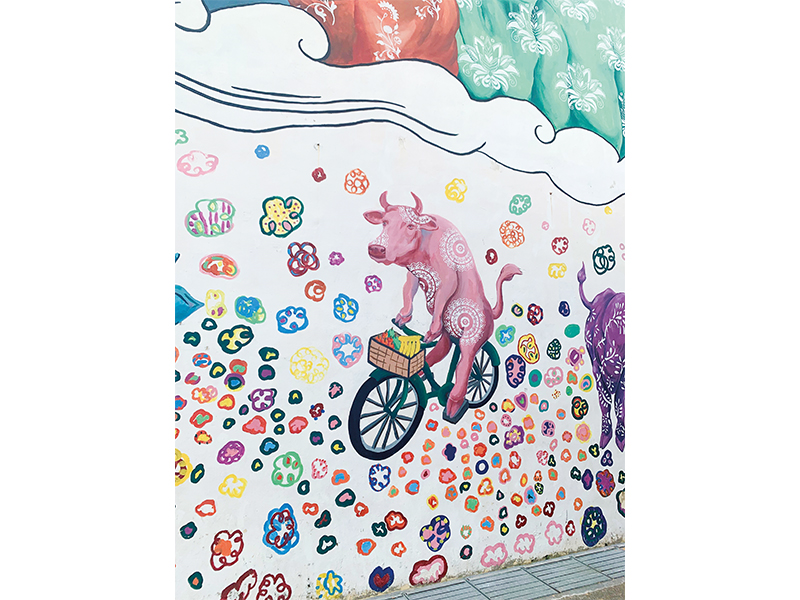
Little India Snippets
- Deepavali was declared a public holiday in Singapore in 1929.
- Little India was not officially named as such until the 1980s.
- The word “thug” derives from the Sanskrit “thuggee”, a colloquial term for Indian assassins up until the 1800s who worshipped the goddess Kali.
- The former house of Tan Teng Niah is the last surviving Chinese villa in Little India.
Check online for opening hours for the Indian Heritage Centre, the Sri Veeramakaliamman Temple and the Mahatma Gandhi Memorial. Two government websites – roots.gov.sg and eresources.nlb.gov.sg – both narrate a thorough history of Little India in Singapore for those who wish to delve a little deeper.
This article first appeared in the July 2022 edition of Expat Living. You can purchase the latest issue or subscribe, so you never miss a copy!
To learn more about living in Singapore, read our latest City Guide here for free!

